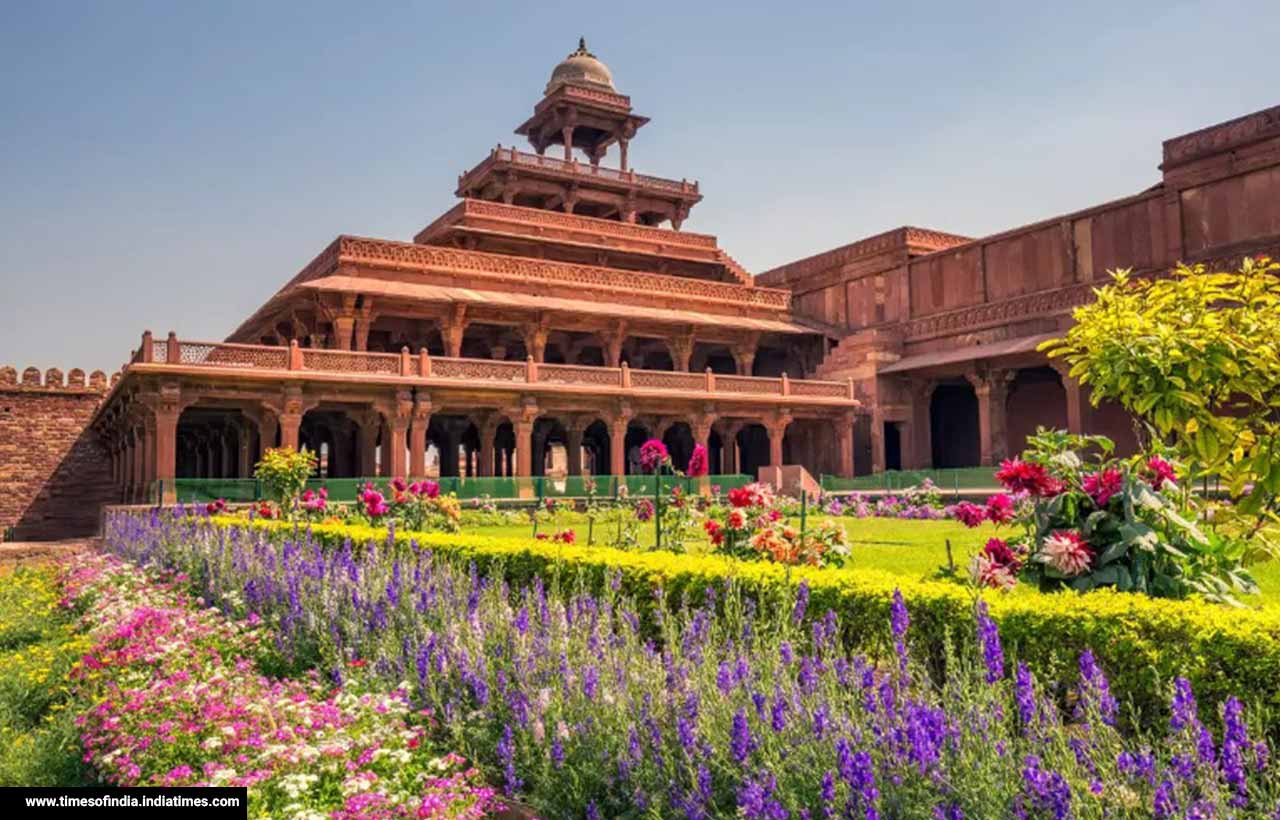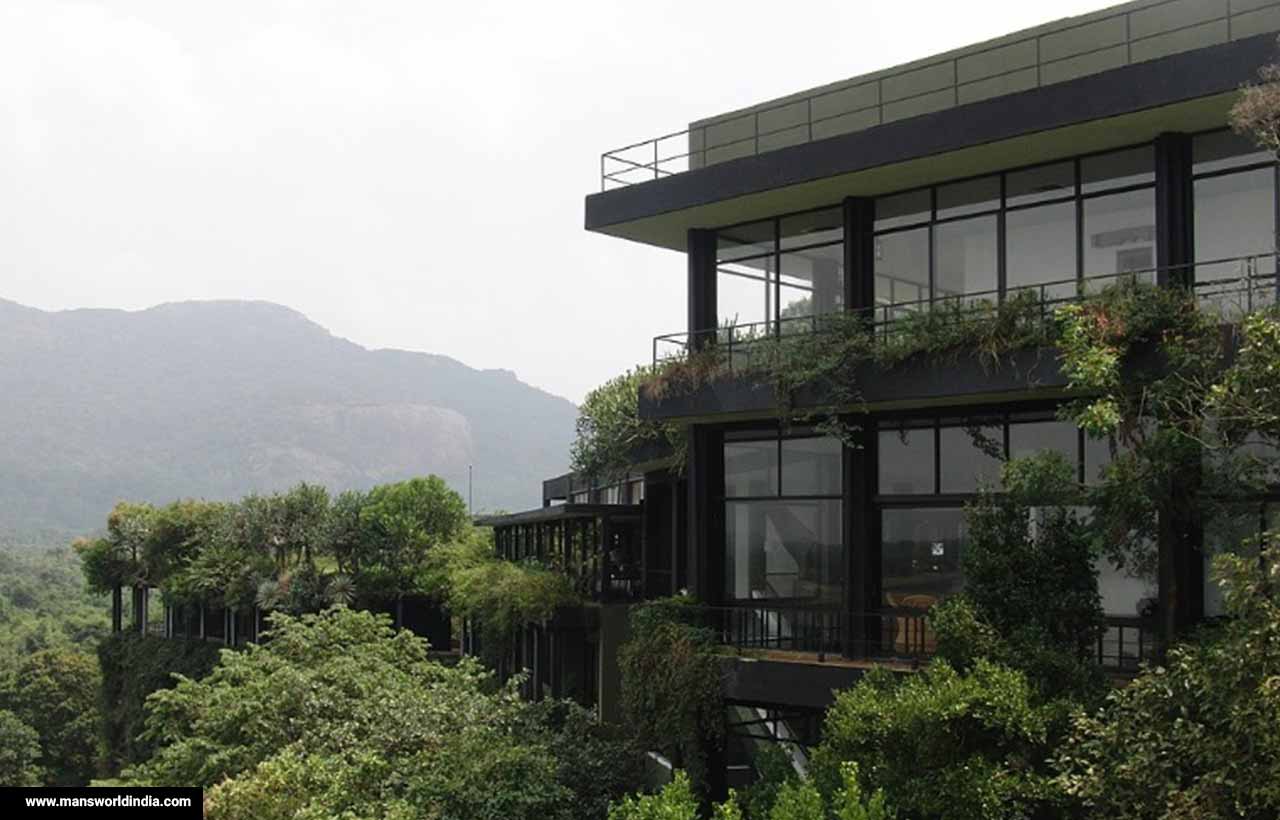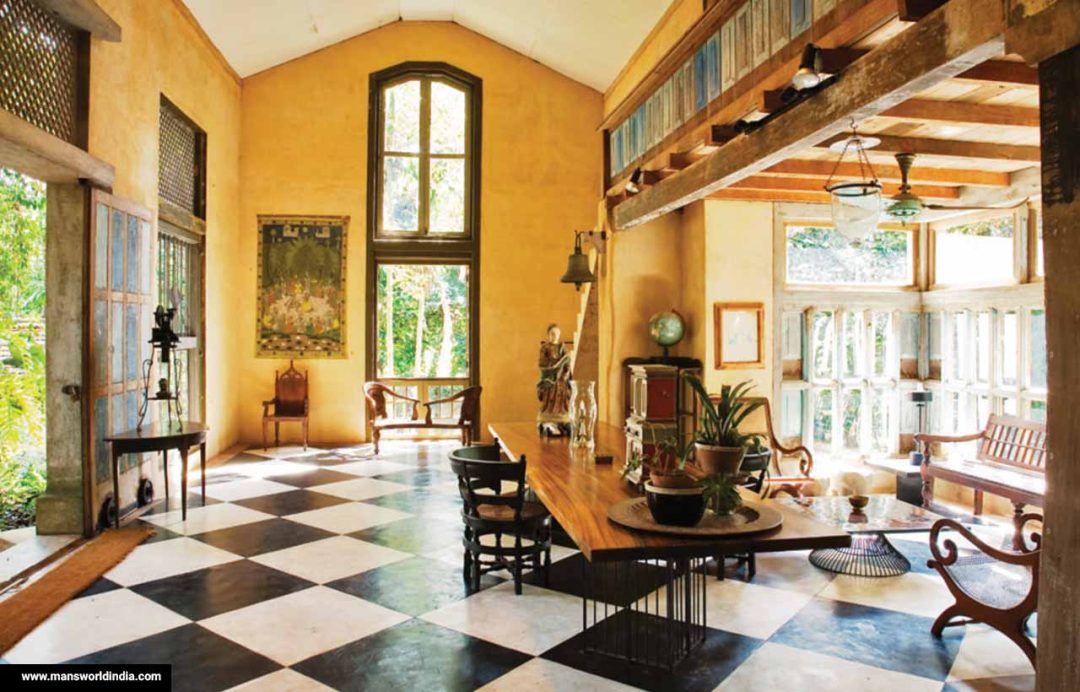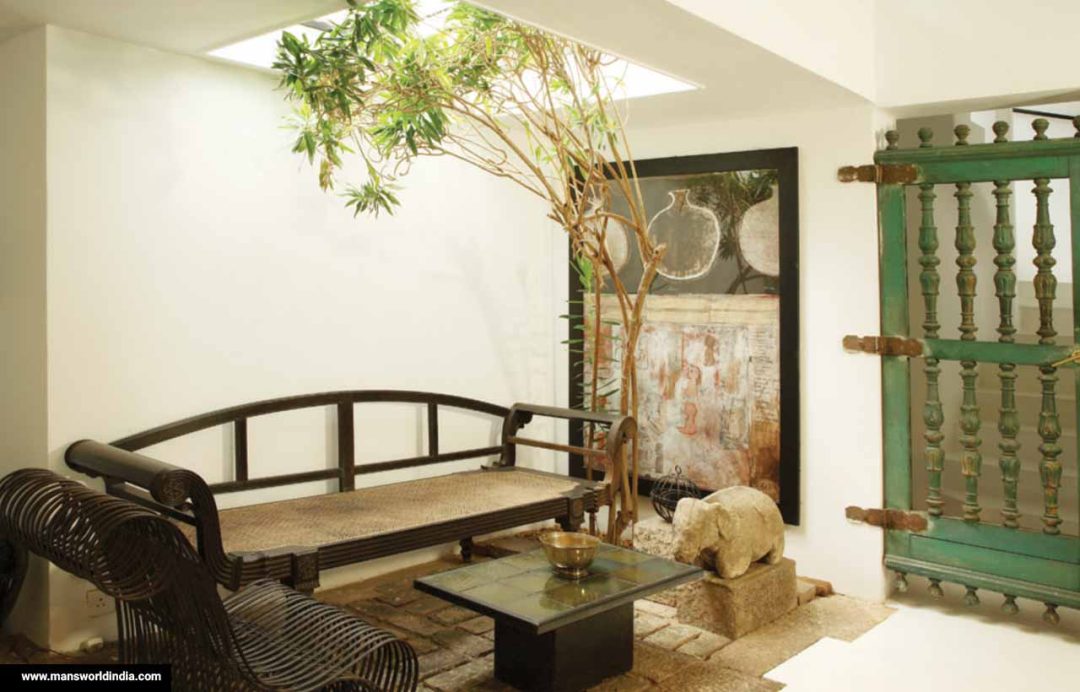Connections are an integral part of human nature. We relate to places, things, people, and nature and develop a living place. I assume the words such as serenity, serene, bliss, and beauty would renounce their significance if nature never survived. Nature is a configuration where we experience ourselves and find a connection in that solitude. Human beings have progressed and are conditioned to understand in terms of culture and values creating the experience of a valuable society, thus feeling alive under the stars, by perceiving the patterns of trees, and the fragrance of flowers. Being an Architect, it is a responsibility to continue to create such interludes in our designs and define the connections. We are responsible for creating a journey connecting humans and nature resulting in an experiential tale.
Surroundings
Sitting in my courtyard,
I started observing nature,
Where there are trees and mushrooms,
The tiny lane of ants climbing,
The flowers smiling glaring at the bright sun,
I can feel the water under my feet,
Sensing cold and rainy,
I started feeling the surroundings,
Feeling the triviality in my soul,
Dwelling on the moment.
Don’t we usually have illusions or dreams about the green spaces and their elegance, Why can’t we conserve and protect them? We are in the race of mass creation after the industrial age where we are adapting our places into the concrete jungle. It has generated other problems like pollution and waste and climate change and the extinction of rare species. I believe it’s time to reconsider and consume sustainable materials and protect our rare nature with species. Climate change is not a hoax but a real thing where many species are affected and are dying due to it. It is our job to preserve them and take essential precautions. Integrating nature in our built form helps to create a breathing environment and establishes a considerable experience for the user.
“What’s interesting about architects is, we always have tried to justify beauty by looking at nature, and arguably, beautiful architecture has always been looking at a model of nature.” – Greg Lynn
History: Importance of built-form with nature
History is the keen knowledge we have about our past experiences and explorations of ourselves. We have not only created spectacular buildings but also enhanced the element of beauty consisting of raw features in our built form. Architectural elements such as doors, windows, terraces, courts, balconies, and jharokha are composed to create a paused activity and experience the surrounding environment. Senses help us to connect and perceive the colors, patterns, and volume and interpret them in a sense of belonging. I believe art was the result of our interpretation of the environment and our emotional mastery. The historical era has informed us that we can create beautiful towns consisting of sustainable materials and architectural beauty with the reflection of the context. That has also exhibited the way of lifestyle and culture respecting the surroundings and creating a living habitation.
When you look at Japanese traditional architecture, you have to look at Japanese culture and its relationship with nature. You can live in harmonious, close contact with nature – this very unique to Japan –Tadao Ando
Islamic architecture and nature
The birth of Islamic architecture consisted of geometry, nature, and community living with sustainability and grace at its peak. They believed that a place belongs to one environment, one culture, and one climate, and capturing that makes it special and rare as an architectural entity. They understood that geometry is the vernacular of the natural order, by looking at the growth of blossom and looking at the flow of water, by looking at the sunset and the sunrise, by looking at ourselves, the probability of hands and faces, you start to see patterns and a structure of life. The Islamic buildings mainly consisted of gardens, courts, and water bodies connecting with the surrounding passages as a transitional space, a pause point in the place. They thought of plants and water in courts, air circulation, cool breeze, and penetration of natural light in the space formulating the play within the elements. Islamic architecture is an amazing example of narrative where it showcases the intricate patterns, colors, and details embodying the Islamic culture. I had visited a beautiful mosque, constructed in an Islamic style and designed to understand the relationship between inside and outside spaces. The courts and water bodies surrounded by a series of columns tell the tale of people and culture. The gardens have plants and one can sense the fragrance of beauty from the corridors. Thus that was a refinement for me to understand the harmony of ourselves and incorporate that into designs. I had a strong influence on such places and that made me realize the importance of our senses and built form. We are strongly connected to the context which gives us the power analytically or dogmatically to belong to any place. The journey of place is the conclusive story of the building and how it is experienced. It consists of nature and built form with moments of pauses and stillness to experience the surrounding.


Nature: Surroundings
I always wonder what future cities will be like, Cities of the concrete jungle, the robotic future of humans, and the loss of beauty. Nature is not apart from us but part of us. We are atoms at a cosmic scale connected to each individual. Being poetic, we are branches of a tree, dust in the air, cool breeze and that’s what connection is meant and understood. I also believe that nature is one step forward in understanding ourselves. So we cannot continue to demolish it. It is the moment to regain consciousness in a place full of trees, courts of flower fragrance, streets habitable to both humans and animals, water bodies, and activities around it. Hence, that’s what the city exists for and gives rise to us feeling alive. We observe the surrounding nature and perceive it, creating a play of tranquility and solitude.

“When one delights as much as I do in planning a building and having it built, I find it impossible to describe the exact steps in an analytical or dogmatic way. I have a very strong conviction that it is impossible to explain architecture in words – I have always enjoyed seeing buildings but seldom enjoyed reading explanations about them – as I feel, with others, that architecture cannot be totally explained but must be experienced.” –Geoffrey Bawa
Relationship between inside and outside environment
Built form is connected to its context and it is not an isolated entity. The context consists of specific styles, beliefs, and cultures interpreted in art forms, surviving in history. Natural context includes mountains, valleys, streams, trees, waterfalls, rivers, and animals to help us to sustain our beauty on planet earth. Architectural built form is the movement of surprises, views of surroundings, the spatial play of functions, sustainable materials, and natural light hitting the built form. The relationship between inside and outside spaces should not create a threshold but develop the continuity of the space, connecting with the environment. It is proved that the environment changes our brain and it changes our behavior. In the 21st century, we are so focused on form-making that we are neglecting the needs of the user and connectivity to the environment, thus creating too little experience of space. Blurring the borders of inside and outside creates a play of light and shadow. Materials that are easily available and sustainable should be the future of the built form. Understanding the climate and designing as per the sun’s direction helps to create shaded and cozy spaces with transitional spaces like courts, jaalis, and verandah to create a semi-open space with enough natural light and connected to the environment. The relationship between inside and outside is important as it creates the living environment and experience for the user. Later cities can be planned in such a way to create the magic of green cities using sustainable materials, usable streets, and places for people to gather, meet and greet.

Each aspect of the building incites our mind and creates our experience such as the touch of the materials, the sound of space, and the smell of the air. Creating the journey of approach, confronted, surprises, and pauses with connection to the environment. There is a remarkable bond between landscape and built form which needs to be proceeded rather than segregated. In a recent study, it is stated that people feel more engaged when connected. I have also observed that the traditional tales about teaching under the trees in an open environment in a playful manner are much better than sitting in a row. Designing spatial arrangements play a crucial role and understanding human needs adds complexity to it. Though we have lost the connection with an environment where we used to sit and paint, stare at stars, and observe patterns of surroundings, it is never too late to understand our problem and bring back the lost connection between humans and their natural environment.
“I design from the inside out. The play of light is vitally important- after all, it makes the greatest difference to one’s quality of life.” – Geoffrey Bawa

Architects and designers have to understand the responsibility towards the environment; by renewing old methods of connecting the way we frame the cities and buildings to connect to rather than detach from nature, thus changing our proximity to nature and maintaining our physical relationship to the environment. The design will create a dialogue consisting of context and cultural behavior and perceiving the world around us. It will shatter the chain of mass production of built forms based on form-making and focus on experiences and sustainability of the place. Cities will be designed in a similar way connecting with the environment and making joyful places. Thoughtful approaches can make cities alive and people can find a profound connection.
We should always ask ourselves what story does architecture tell?
Will it matter to those who experience it?
“Design transforms awareness. Designs that grow out of and celebrate place ground us in place. Designs that work in partnership with nature articulate an implicit hope that we might do the same.”
Bibliography
https://www.viator.com/en-ZA/Agra-attractions/Fatehpur-Sikri/d4547-a13557